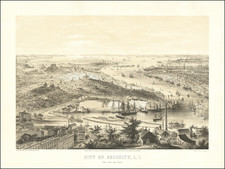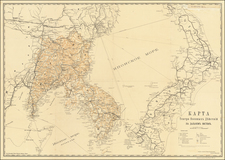The First Japanese Embassy to the United States.
Woodcut kawaraban sheet showing the USS Powhatan serving in its role transporting the first Japanese Embassy to the United States in 1860.
First Japanese Embassy to the United States
The Japanese Embassy to the United States (万延元年遣米使節 Man'en gannen kenbei shisetsu, lit. First year of the Man'en era mission to America) was dispatched in 1860 by the Tokugawa shogunate (bakufu). Its objective was to ratify the new Treaty of Friendship, Commerce, and Navigation between the United States and Japan, in addition to being Japan’s first diplomatic mission to the United States since the 1854 opening of Japan by Commodore Matthew Perry.
Another significant facet of the mission was the bakufu’s dispatch of a Japanese warship, the Kanrin Maru, to accompany the delegation across the Pacific and thereby demonstrate the degree to which Japan had mastered Western navigation techniques and ship technologies barely six years after ending its isolation policy of nearly 250 years.
US-Japan Treaty of Amity and Commerce
The Treaty of Amity and Commerce (日米修好通商条約 Nichibei Shūkō Tsūshō Jōyaku), also called the Harris Treaty, between the United States and Japan was a formal consequence of Perry's opening of Japan in 1853. The treaty was signed on the deck of the USS Powhatan in Edo (now Tokyo) Bay on July 29, 1858. It opened the ports of Kanagawa and four other Japanese cities to trade and granted extraterritoriality to foreigners, among a number of trading stipulations.
Japanese newspapers began in the 17th century as yomiuri (読売、literally "to read and sell") or kawaraban (瓦版, literally "tile-block printing" referring to the use of clay printing blocks), which were printed handbills sold in major cities to commemorate major social gatherings or events. These sheets were often printed anonymously.
The kawaraban publishers served as a crucial vector for the transmission of information about Commodore Mathew Perry's opening of Japan. During the Edo Period, the arriving European vessels were called kurofune (Black Ships). That time was characterized by great social upheaval, and intense public interest in the agents of the outside world arriving in Japan.
Anna Wada, in "About Kawaraban", Perry in Japan A Visual History, gives background on the kawaraban:
The kawaraban took up a range of topics, including natural disasters, superstitious happenings, murders, and less commonly, political satire. Printers chose topics more to entertain and satisfy the readers’ curiosity than to educate them. Visual components such as illustrations, diagrams, and maps attracted the people to the print and helped them to understand the text, as well as sometimes offering additional information.
Throughout the Edo period the shogunate repeatedly restricted printing for a mass audience, particularly seeking to avoid rumors and political commentary. By the time the Black Ships [i.e., Perry’s fleet] arrived at the end of the Edo period, however, the system of censorship could not keep up with the number of prints in circulation. The increase in publications coincided with the spread of literacy in both urban and rural areas.









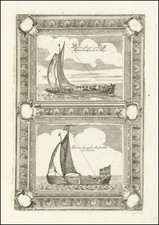
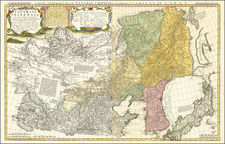
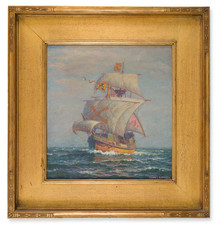
![(World War II) [Iwo Jima Aerial Reconnaissance Photograph, March 8, 1945]](https://storage.googleapis.com/raremaps/img/small/83776.jpg)
